Engraving leather is a great way to add personalization and flair to any type of leather goods. It can be used to create decorative designs, engrave names or initials, and even brand your products with logos. There are many methods for engraving leather, ranging from simple to complex depending on the desired result. In this article, we’ll cover the basics of how to engrave leather and provide some useful tips for getting the best results.
What Is Leather Engraving?
Leather engraving is the process of creating a design or pattern on a piece of leather. This can be done in various ways, from mechanical to chemical methods. Mechanical engraving involves using tools like stamps and dies to press patterns into the leather surface. Chemical engraving involves using chemicals to burn patterns into the leather. Both methods are used for producing different effects and results.[2]
Types of Engraving Tools
There are several different tools that can be used to engrave leather. The most common tool is the rotary engraver, which uses a rotating bit to create intricate patterns. There are also hand tools such as stamps and dies that can be used to produce simpler designs or words. Other tools include lasers, chemicals, and even burners for creating unique effects.[2]
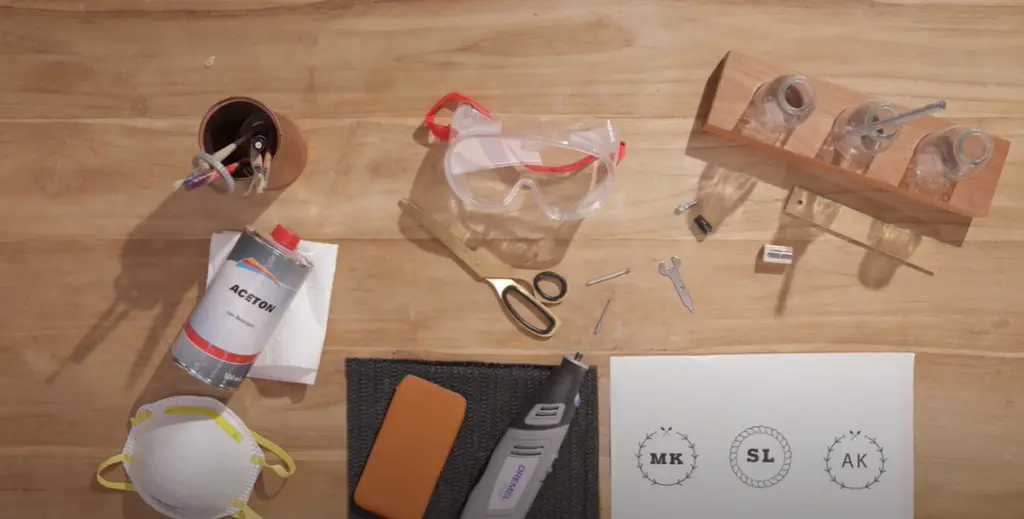
How to Engrave Leather
Preparation
Before you can start engraving leather, it’s important to prepare the surface. Clean and condition the leather before attempting to engrave. This helps ensure that your design will last for a long time without fading or cracking. You should also consider using a stabilizer on the backside of the leather. This will help provide more consistent results and prevent tearing when you’re working with thinner leather.[1]
Choose Your Design
The design you choose for engraving will largely depend on what type of effect you want to achieve. If you’re creating a logo or branding design, a laser engraver might be the best option. For more intricate designs, stamps and dies are often used to create detailed patterns. When working with chemicals, consider using pre-cut stencils to help you achieve the desired design.[1]
Transfer the Leather Design
Once you have a design in mind, it’s time to transfer the pattern onto the leather. This can be done using either a transfer paper or by tracing directly onto the leather surface with a pencil. If you’re unsure of where to start, use the pre-cut stencils mentioned above as your guide. Once you’ve transferred your design, you’ll be ready to start engraving.[1]
Preparing the Leather for Engraving
To get the best results from engraving, you’ll want to prepare the leather by dampening it slightly with a damp cloth. This will help prevent burning and tearing when engraving. If you’re using a laser or chemical method of engraving, make sure to wear appropriate safety gear such as gloves and protective eyewear.[1]
Different Techniques for Engraving Leather
Hand Engraving
Hand engraving is the oldest and most traditional method of leather engraving. It involves using a hammer and chisel or other tools to carve the design into the leather surface. This can be time-consuming, but it can also create beautiful results depending on your skill level. It’s important to use the right tools for this type of work, such as mallets and small chisels.[3]
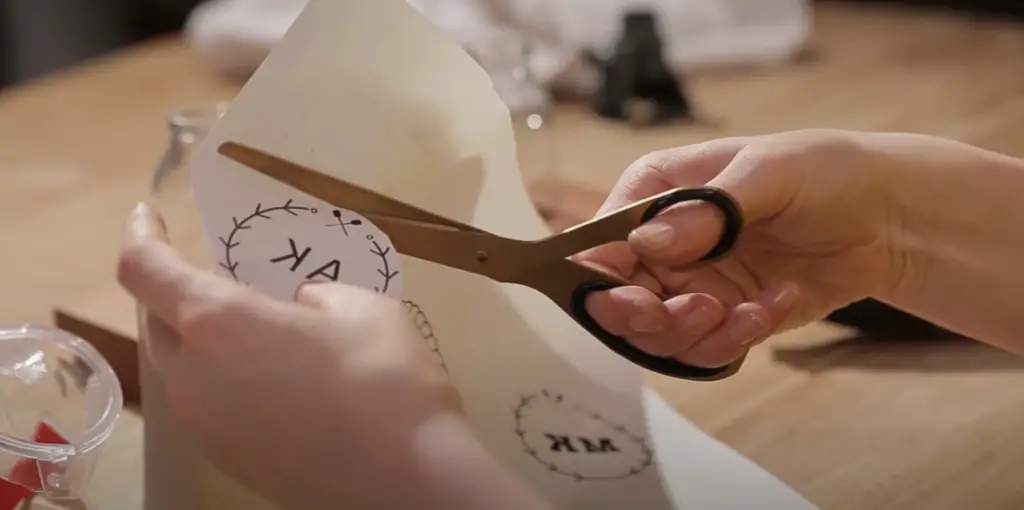
Machine Engraving
Using a machine engraver is the most efficient method for engraving leather. It involves using a rotary tool with different attachments such as stamps, dies, burners, or lasers to produce intricate patterns. This type of engraving can also be done on thicker pieces of leather for a deeper and more permanent effect.[3]
Carving or Etching Leather
Carving and etching are two techniques that can be used to create intricate designs on leather. Carving involves using a sharp tool to cut away the surface of the leather, while etching involves placing a pattern on the leather and using an acid solution or other chemicals to burn away the paper and reveal the design below. Both methods are time-consuming but can produce beautiful results.[3]
Branding or Hot Stamping Leather
Branding and hot stamping are two methods used to add logos or other decorative designs to leather. Branding involves using a heated brand iron to press the design into the leather, while hot stamping is done with a special machine that uses pressure and heat to burn the design into the surface of the leather. Both techniques create permanent results and can be used for branding.[3]
Embossing and Debossing Leather
Embossing and debossing are two other techniques that can be used to add decorative designs or logos to leather. Embossing involves using a stamp or die to press the design into the leather surface, while debossing is done by pressing from behind the leather so that the pattern appears on the front side. These methods are both great for adding texture and dimension to leather goods.[3]
Pyrography
Pyrography is a technique that involves burning the design onto the leather surface using hot tools. This method requires a lot of practice and can take some time to get used to, but it can produce beautiful results. It’s best suited for creating intricate patterns or designs that are too small for hand engraving or machine engraving.[3]
Foiling
Foiling is another technique that can be used for adding designs to leather. This involves using heat to transfer a thin layer of gold or silver foil onto the surface of the leather. Foiling is great for creating intricate patterns and logos, and is also an excellent way to add a bit of sparkle and shine to your project.[3]
Perforation
Perforation is a technique used to create small holes in the leather. This can be done with a special tool or even by hand, depending on what type of design you’re trying to achieve. Perforation is sometimes used to add texture and dimension to leather goods, as well as for decorative purposes. It’s also an effective way to make small items like jewelry easier to attach.[3]
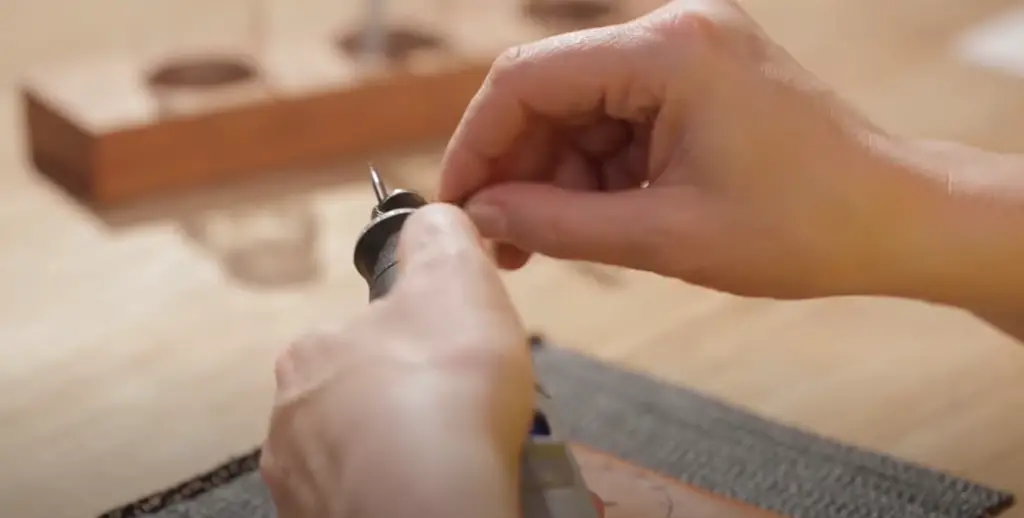
Embroidery
Embroidery is a great way to add color and texture to leather. This involves using thread and needle to stitch patterns onto the surface of the leather. Embroidery can be used for both decorative purposes or practical ones, such as adding pockets or straps to bags or cases. It’s also an excellent way to personalize your items with monograms or initials.[3]
Laser Engraving Leather
Laser engraving is a modern technique that can be used to create intricate designs on leather. It involves using a laser beam to etch the design into the surface of the leather. Laser engraving is great for creating logo designs or branding elements, and it’s also very efficient and safe.[3]
Rotary Engraving Leather
Rotary engraving is a great way to add intricate designs to leather goods. It involves using a rotary tool with specialized bits that cut away at the surface of the leather. This method is often used for creating logos or other decorative elements, and it’s also an efficient way to add intricate details to any project.
Engraving leather can be a great way to add an extra level of detail and personalization to your projects. From creating logos and branding elements to adding texture and dimension, there are many ways to incorporate engraving into leather goods. Choose the method that works best for you and get creative![3]
Burnishing Leather
Burnishing is another great technique for adding detail to leather. It involves using an abrasive tool such as a bone folder or burnisher to rub and polish the surface of the leather until it shines. Burnishing adds a nice touch to any project, and it’s also great for protecting the surface of the leather from wear and tear.[3]
Maintenance and Care
Using Too Much Water
When caring for leather, it’s important to avoid using too much water. Too much water can cause the leather to become stiff and brittle, which makes it harder to work with and increases the chances of damage. Instead, use a damp cloth or sponge to clean off any dirt or debris.[5]
Using the Wrong Cleaners
It’s also important to avoid using the wrong cleaners or solvents on leather. These can cause damage and discoloration, so it’s best to use mild soap and water for cleaning. For tougher stains, you may need to use special leather cleaners or conditioners.[5]
Using Soap
When cleaning leather, it’s also important to avoid using too much soap. Too much soap can cause the leather to become dry and brittle, which makes it harder to work with and increases the chances of damage. Instead, use a mild soap or a special leather cleaner for tougher stains.[5]
Cleaning Too Often
When it comes to caring for leather, it’s important to avoid cleaning too often. Cleaning the leather too often can cause discoloration and damage, so be sure to only clean it when necessary. If you need to remove dirt or debris, use a damp cloth or sponge instead of soap.[5]
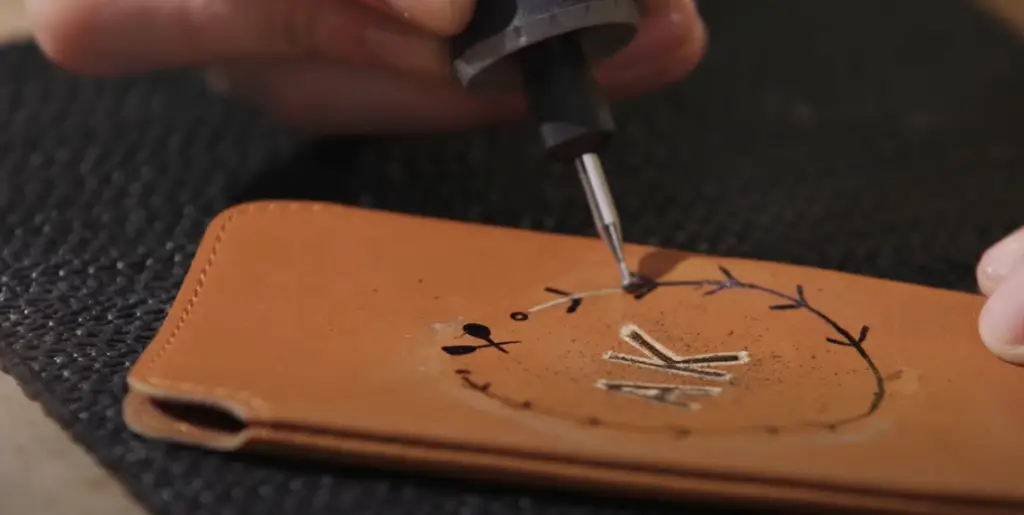
Using Harsh Chemicals
It’s important to avoid using harsh chemicals when caring for leather. These can cause discoloration and damage, so it’s best to stick with mild soap and water for regular cleaning. If you need to use a special cleaner or conditioner, make sure it is specifically designed for use on leather.[5]
Protecting from the Sun
Whenever possible, try to keep leather away from direct sunlight. The sun can cause discoloration and damage, so it’s best to store leather in a cool, dry place out of direct sunlight. If your leather has become overexposed to the sun, use special conditioners or oils to help restore its original color and texture.[5]
Sealing the Leather
Sealing the leather is another important step in caring for it. Sealing the leather helps to protect it from dirt, water, and other elements that can cause damage. There are a few different ways to seal leather; you can use wax, oil, or special sealants designed specifically for leather goods.[5]
Tips for Engraving Leather
Choose the Right Tools
When engraving leather, it’s important to choose the right tools for the job. Depending on what type of engraving you’re doing, you’ll need different tools such as knives, chisels, or even lasers. Be sure to research your project before choosing a tool so that you can get the best results.[4]
Create a Template
Creating a template is an important step in engraving leather. A template allows you to create a guide for your design so that you can follow it accurately while engraving. You can make templates out of paper, cardboard, or even plastic.[4]
Practice Before Starting
Before you start engraving leather, it’s important to practice first. This will help you become familiar with the tools and techniques so that you can get better results on your final product. You can practice by using scrap pieces of leather or even paper.[4]
Work Slowly
When engraving leather, it’s important to work slowly and carefully. Rushing through the process can cause mistakes or uneven results, so be sure to take your time and focus on getting each line of your design right.[4]
Protect Your Eyes
Finally, it’s important to protect your eyes when engraving leather. The tools you use can create a lot of dust and debris, which can be harmful to your eyes. Be sure to wear safety glasses or goggles while working on your project.[4]
Common Mistakes Made During Leather Engraving and How to Avoid Them
Not Creating a Template
One of the most common mistakes made during leather engraving is not creating a template. Without a template, it’s much harder to keep your design consistent and accurate. Make sure to create a template before you start engraving so that you can follow it accurately while working.[1]
Using Dull Tools
Another mistake to avoid is using dull tools. Dull tools can cause uneven results and mistakes in your design, so be sure to sharpen your tools regularly or replace them if they become too worn.[1]
Using the Wrong Bits
Rotary engraving requires the use of specialized bits, so it’s important to make sure you are using the right ones for the job. Different materials require different bits, so be sure to check which type of bit is best suited for your project before you start engraving.[1]
Not Protecting Your Eyes
It’s also important to make sure you are protecting your eyes when engraving leather. The tools used create a lot of dust and debris, which can be harmful to your eyes. Make sure to wear safety glasses or goggles while working on your project.[1]
Not Taking Breaks
Finally, it’s important to take breaks when engraving leather. Engraving for extended periods of time can cause fatigue and mistakes in your design, so make sure you are taking regular breaks throughout your project. This will help you stay focused and work more accurately.[1]
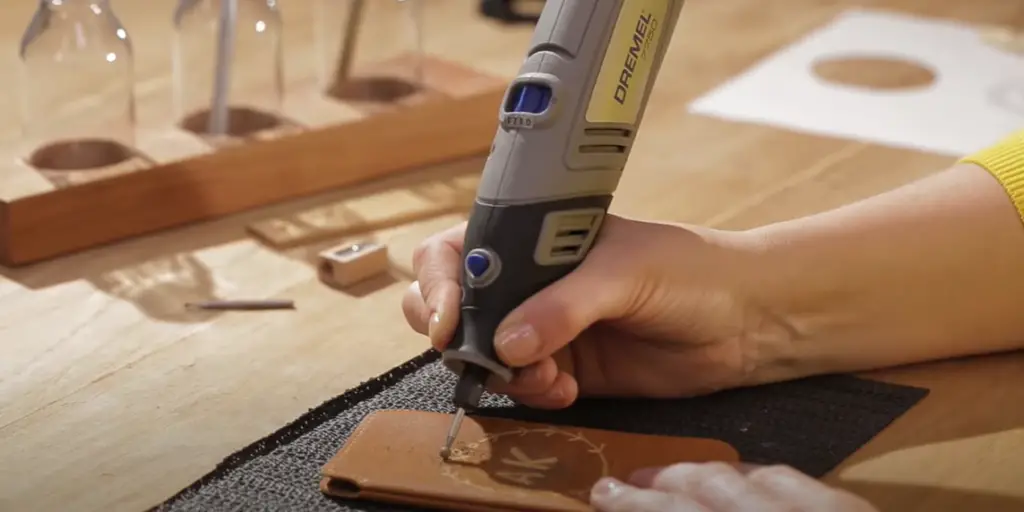
FAQ
What is the best engraving tool for leather?
The best tool for engraving leather will depend on the type of design you are trying to achieve. For basic designs, a rotary tool with specialized bits is often the best option. For more detailed designs, a laser engraver may be necessary.
How do you make leather engraving?
Making a leather engraving requires several steps. First, you will need to create a template for your design. Next, you will need to choose the right tools and materials for your project. Finally, you can use those tools to slowly and carefully engrave the leather. It’s important to take breaks throughout the process so that you stay focused and avoid mistakes.
Can you engrave leather at home?
Yes, you can engrave leather at home with the right tools. Rotary tools are often used for basic designs, while laser engravers may be necessary for more detailed designs. Be sure to research your project and understand the techniques before attempting to engrave leather at home.
How do you emboss leather yourself?
Embossing leather yourself requires the use of specialized tools. First, you will need to create a template for your design. Next, you will need to choose the right materials and tools for embossing. After that, you can slowly and carefully emboss the leather with your chosen tools. It’s important to take breaks throughout the process so that you stay focused and avoid mistakes.
Is it better to engrave or emboss leather?
Whether it’s better to engrave or emboss leather depends on the design you are trying to achieve. Engraving is best for detailed designs, while embossing is often used for simpler, more basic designs. It’s important to understand the techniques and tools required for each before deciding which one to use.
Is it difficult to emboss leather?
Embossing leather is not particularly difficult, but it does require the use of specialized tools and techniques. It’s important to research your project before starting so that you understand all the steps involved in embossing leather. With the right tools and knowledge, you can emboss leather successfully.
What is the difference between embossing and engraving leather?
The main difference between embossing and engraving leather is the type of design each technique can create. Embossing typically creates simpler, more basic designs while engraving is best suited for detailed and intricate designs. It’s important to understand the techniques and tools required for each before deciding which one to use.
What is engraved leather called?
Engraved leather can be called a variety of names, including embossed leather or debossed leather. The name used will depend on the type of design created and the technique used to create it. In general, though, any kind of detailed design engraved into leather can be referred to as an engraving.
What are the two types of engraving?
The two main types of engraving are rotary engraving and laser engraving. Rotary engravings are made with a specialized tool that is used to carve the design into the leather, while laser engravings use a high-powered beam of light to etch the design into the material. Each technique has its own advantages and disadvantages, so it’s important to research both before deciding which one is best for you.
Useful Video: How to Engrave your Personal Leather Phone Case DIY
Conclusion
Engraving leather is a great way to create unique and lasting designs. It’s important to understand the techniques and tools required for successful engraving before starting your project, as well as any common mistakes that should be avoided. With the right knowledge and preparation, you can successfully engrave leather and create beautiful designs that will last for years to come!
References:
- https://acrylgiessen.com/en/how-to-engrave-leather/
- https://www.architecturelab.net/how-to-engrave-leather/
- https://popsewing.com/blogs/news/7-techniques-to-engrave-leather-how-to-add-personalized-design-to-your-leathercrafts
- https://joojoobs.com/top-7-leather-engraving-techniques-explained/
- https://www.dremel.com/us/en/projects/project-plans/step-by-step-guide-to-engraving-your-leather-phone-case

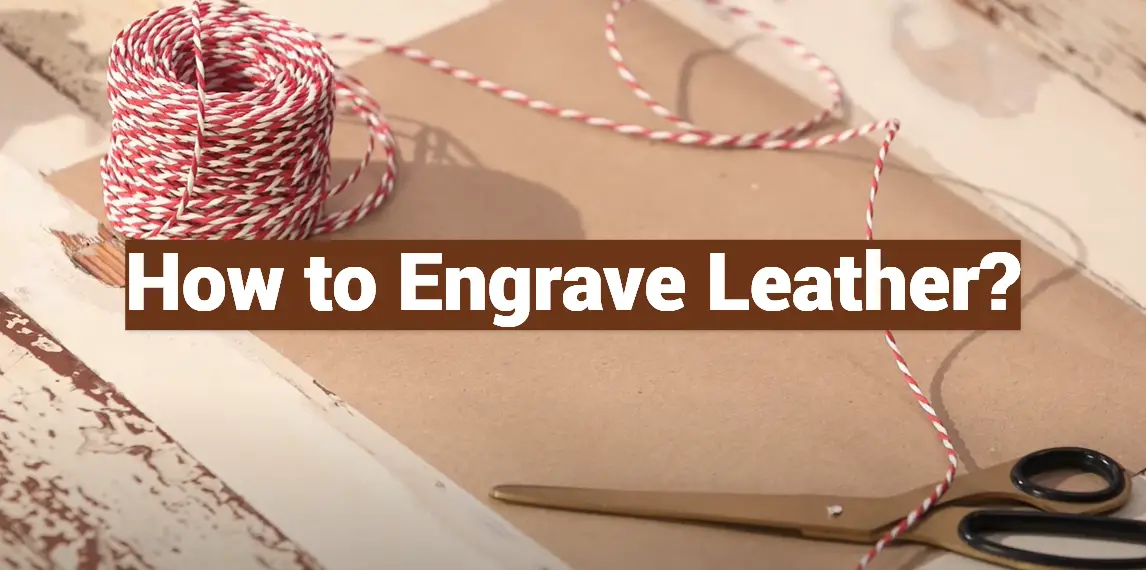

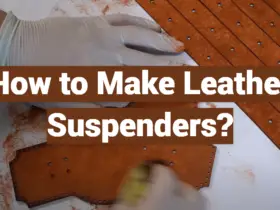

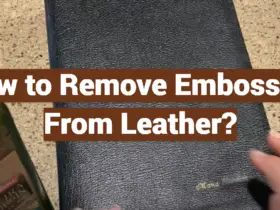

Leave a Reply